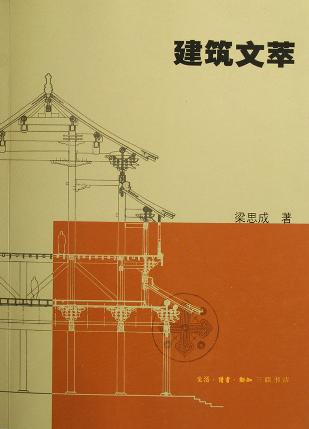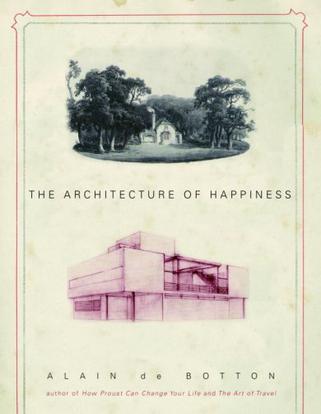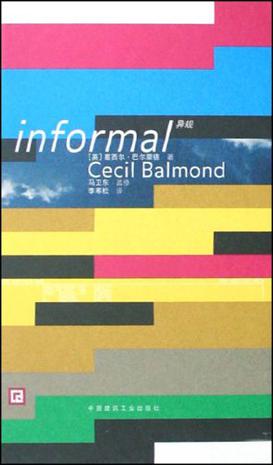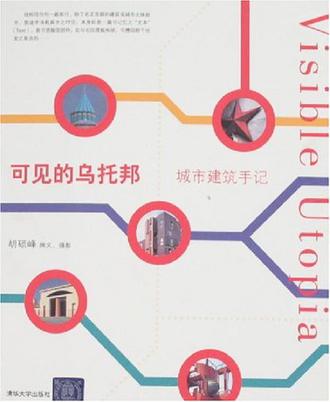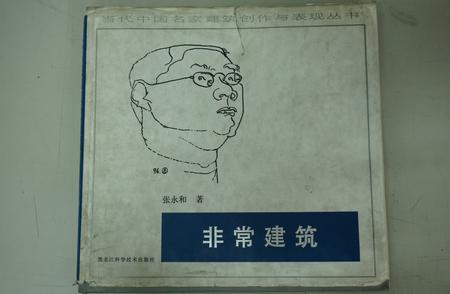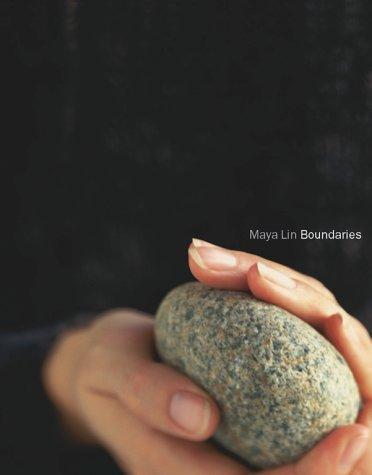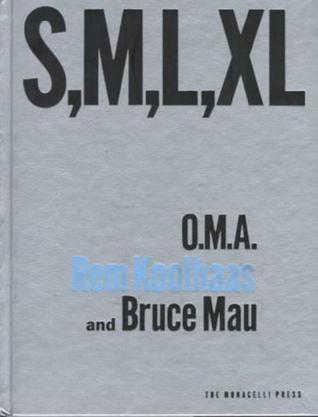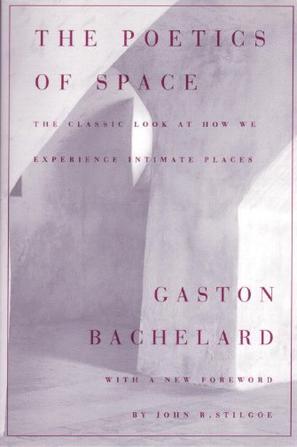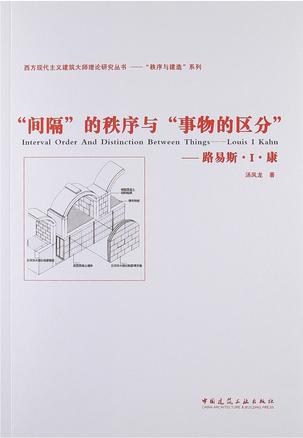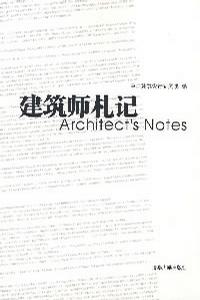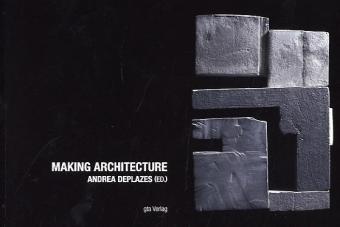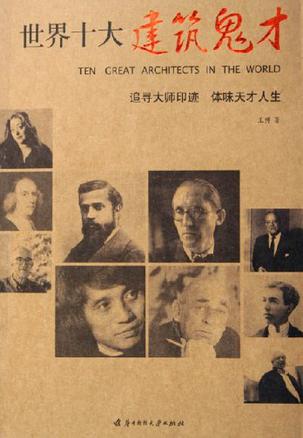欢迎来到相识电子书!
标签:architecture
-
建筑文萃
《建筑文萃》是一本包括梁先生在建筑学有关诸领域学术思想的选集,着重收集了粱先生在抗日战争胜利前夕和解放后发表的关于城市规划、古建筑保护、建筑理论和设计等方面的文章和信函。《建筑文萃》并未收集那些只供少数专家研究的专著和科研报告,倒是收集了不少梁先生为报刊写的科普作品,所以也适合于有兴趣了解和欣赏建筑艺术的读者阅读。 -
The Architecture of Happiness
From Publishers Weekly With this entertaining and stimulating book, de Botton (How Proust Can Change Your Life) examines the ways architecture speaks to us, evoking associations that, if we are alive to them, can put us in touch with our true selves and influence how we conduct our lives. Because of this, he contends, it's the architect's task to design buildings that contribute to happiness by embodying ennobling values. While he makes no claim to be able to define true beauty in architecture, he suggests some of the virtues a building should have (illustrated by pictures on almost every spread): order combined with complexity; balance between contrasting elements; elegance that appears effortless; a coherent relationship among the parts; and self-knowledge, which entails an understanding of human psychology, something that architects all too often overlook. To underscore his argument, de Botton includes many apt examples of buildings that either incorporate or ignore these qualities, discussing them in ways that make obvious their virtues or failings. The strength of his book is that it encourages us to open our eyes and really look at the buildings in which we live and work. A three-part series of the same title will air on PBS this fall. (Oct. 3) Copyright © Reed Business Information, a division of Reed Elsevier Inc. All rights reserved. From The Washington Post's Book World/washingtonpost.com While happily reading Alain de Botton's graceful musings about architectural beauty, I was suddenly struck by the photograph of the Edgar J. Kaufmann House in Palm Springs, Calif., designed by Richard Neutra in 1946. I turned the page to see what de Botton had to say about it: "The bourgeois couples who lived in Richard Neutra's mid-twentieth-century steel and glass pavilions in California may at times have drunk too much, squabbled, been insincere and overwhelmed by anxiety, but at least their buildings spoke to them of honesty and ease, of a lack of inhibition and a faith in the future." That was all. Odd, I thought. De Botton never points out that this same Edgar J. Kaufmann commissioned the most beautiful private home in America, Fallingwater. He was. Nor, I discovered after checking the index, does he mention its architect, a certain Frank Lloyd Wright. Not once. There's no obvious reason why the author of How Proust Can Save Your Life and The Consolation of Philosophy should leave out Wright. Perhaps he simply decided to challenge himself, to see if he could manage the trick, just as the French novelist Georges Perec once published a perfectly readable novel in which none of the words contain the letter E. Certainly, de Botton otherwise reveals his usual wide learning, lyrically deployed. He discusses the neoclassical influence of Palladio, the impact of Horace Walpole's Gothic extravaganza Strawberry Hill on 19th-century building in Britain, the austere concrete housing of Le Corbusier (who once dubbed his sterile tenements "machines for living"). But mysteriously, almost tantalizingly, he avoids the vastly influential, world-famous Wright, whose houses are so serenely beautiful to look at and yet almost impossible to live in comfortably -- at least if you slouch, have children or collect anything. Not surprisingly, The Architecture of Happiness is itself a carefully designed book, tightly constructed around the photographs that appear on virtually every other page. (Another mystery: Which came first, the images or the text?) There are pictures of castles, cathedrals, office buildings, private homes, bridges, hallways, windows, chairs, ironwork. De Botton visits a theme park in Japan built to resemble 17th-century Amsterdam, shows us a 30-foot-high obelisk memorializing a beloved pig, interprets the monumental elegance of the Royal Crescent in Bath, and discusses both the early modern pursuit of functionality and the ancient Japanese esthetic of wabi, which "identified beauty with unpretentious, simple, unfinished, transient things." Throughout, de Botton argues that the buildings we walk by, work in or come home to affect how we feel. They influence our mood, our sensibility, our very character. No one is likely to disagree with this, especially those of us who dispiritedly sink down into our windowless office cubicles day after day or vainly yearn for just one room, let alone an entire house, like those in Architectural Digest. Alas, much of the time we must simply accept what we are given or settle for what we can afford. For at no point does de Botton seriously address the economics of architecture and interior design. Even if you do it yourself, construction of any kind, especially the highly individualized, is almost prohibitively expensive. This reality, however, doesn't undercut de Botton's essential point: "Buildings speak -- and on topics which can readily be discerned. They speak of democracy or aristocracy, openness or arrogance, welcome or threat, a sympathy for the future or a hankering for the past." In short, "they speak of visions of happiness." De Botton attempts to understand aspects of that happiness by touching on the achievements or failures of particular styles and constructions. He offers us, in effect, a handsome photo album printed on coated stock, augmented by thoughtful, highly polished paragraphs and pensées. Time after time, his descriptions neatly capture the distinctiveness and character of even the most unusual buildings. Admittedly, those who prefer their sentences strictly functional may sometimes judge de Botton's a tad lyrical, just as his mini-essays risk sounding a little gushy. For the most part, though, he keeps his balance, largely through his quiet intelligence, passionate conviction and the charm of a personality lightly tinged with melancholy: "The failure of architects to create congenial environments mirrors our inability to find happiness in other areas of our lives. Bad architecture is in the end as much a failure of psychology as of design. It is an example expressed through materials of the same tendency which in other domains will lead us to marry the wrong people, choose inappropriate jobs and book unsuccessful holidays: the tendency not to understand who we are and what will satisfy us. "In architecture, as in so much else, we cast around for explanations to our troubles and fix on platitudinous targets. We get angry when we should realize we are sad and tear down ancient streets when we ought instead to introduce proper sanitation and street lights. We learn the wrong lessons from our griefs while grasping in vain for the origins of contentment. "The places we call beautiful are, by contrast, the work of those rare architects with the humility to interrogate themselves adequately about their desires and the tenacity to translate their fleeting apprehensions of joy into logical plans -- a combination that enables them to create environments that satisfy needs we never consciously knew we even had." De Botton concludes his book with an even more heartfelt plea: We must strive to build in a manner worthy of the meadows and woods we are destroying. "We owe it to the fields that our houses will not be inferiors of the virgin land they have replaced. We owe it to the worms and the trees that the buildings we cover them with will stand as promises of the highest and most intelligent kind of happiness." Copyright 2006, The Washington Post. All Rights Reserved. From Bookmarks Magazine Alain De Botton, author of How Proust Can Change Your Life, The Art of Travel, and Status Anxiety, among other books, takes a humanistic approach in Architecture of Happiness and explores the ways in which our built environment affects us. He occasionally overindulges in florid prose, but critics agree that his more general observations of architecture are sound and interesting, if not entirely novel. The average reader will find much of interest in the broad range of eras, places, and styles that de Botton discusses. Well-placed photographs illustrate each point in the text. The book is so visual, in fact, that the BBC is making a three-part television series based on it, to air on PBS this fall. Copyright © 2004 Phillips & Nelson Media, Inc. Review "De Botton is a lively guide, and his eclectic choices of buildings and locations evince his conclusion, that “we should be as unintimidated by architectural mediocrity as we are by unjust laws.” —The New Yorker The next time I'm at a party, and the conversation turns to "serious topics," like what the stock market did today, I think I'll suggest we talk about something more important: architecture. I'll ask the investment banker why he bought the house he did and insist he answer the question. And then I'll start quoting Alain de Botton. —The National Post If this book were a building, it would be a contemporary reading room, I think, with big windows, and clean, built-in bookshelves with a fold-out step ladder just right for fetching slim volumes from the top shelf. The elegant clarity and brisk humour of his style, accompanied by pages of photos, opens your eyes to the rich possibility of thinking about your home, and your city, in a new way. —The Toronto Star "De Botton's books are the literary equivalent of the Slow Food movement. They demand to be lingered over, not because the concepts are difficult but because they are rich and deep. Be prepared to put down your book frequently and turn his last few sentences over in your mind, testing his theses against the rooms and buildings you know well." —The Globe and Mail "In this simple, entertaining and brilliant book, Alain de Botton explores how architecture speaks to us and why it affects all aspects of human life. His great strength is to explain things we always knew but never understood." —Christopher Hume, Architecture Critic, Toronto Star “How did we ever manage without de Botton?” — Sunday Times (U.K.) “[de Botton] deals with questions of style, ideas of beauty, notions about why certain structures appeal to us. The author argues that we love beautiful buildings because they solidify ideas we have about ourselves and our world. They put into concrete form our aspirations; they compensate for our human weaknesses; in short, they make us happy. Virtually every page contains a sentence any essayist would be proud to have written. A lyrical and generously illustrated monograph about the intimate relationship between our buildings and ourselves.” — Kirkus Reviews “Singlehandedly, de Botton has taken philosophy back to its simplest and most important purpose: helping us live our lives.” — Independent Product Description One of the great but often unmentioned causes of both happiness and misery is the quality of our environment: the kinds of walls, chairs, buildings and streets that surround us. And yet a concern for architecture and design is too often described as frivolous, even self-indulgent. The Architecture of Happiness starts from the idea that where we are heavily influences who we can be, and it argues that it is architecture’s task to stand as an eloquent reminder of our full potential. Whereas many architects are wary of openly discussing the word beauty, this book has at its center the large and naïve question: What is a beautiful building? It is a tour through the philosophy and psychology of architecture that aims to change the way we think about our homes, our streets and ourselves. -
异规
本书从一个结构工程师的视角来解析建筑的形成方式。这里“异规”是指规整的建筑构成相反的建筑表达。作者列举了一系列与建筑结构相关的数学和物理定义以及由此引发的形成种种随意、自由、非传统的建筑形成及空间的方式组合。本书适合建筑师、结构师及相关专业师生阅读。 本书向读者展示了一个全新的审视和构思建筑的起点和角度。它颠覆了先建筑再结构的习惯思维和操作次序,而把结构构件和体系的“异规”作为设计方法的入手点。从这里出发,我们会发现一个令自己欣喜和惊讶的世界。 本书以夹叙夹议的结构展开,即理论的宣示和分析与一组组工程案例相间呈现并相辅相成、互相支持。书中列举的8个案例都是在当代建筑界极具影响的项目,并且在建筑结构上都颇有挑战性。作者在与瑞姆·库哈斯、丹尼尔·李伯斯金、阿尔瓦罗·西扎等建筑大师的合作中,以其创造力使建筑结构及构件精彩地实现并诠释了建筑师的思想。或者说结构本身也是建筑,也述说着建筑思想,而不光是支撑建筑的幕后英雄。 本书的编排也极具特色:文字、草图、图纸、照片交替出现。正如塞西尔本人所说,阅读也有自己的空间和结构形式,他想让此书犹如布鲁斯一样,吟唱与器乐交相辉映、相互对话。 目录 14 序 17 波尔多别墅 57 鹿特丹当代美术馆 109 异规 125 凯姆尼兹方案 173 再访里尔 189 螺旋 217 宣言 229 眺望波尔多的窗户 241 分形面砖 265 分形 273 会展中心 309 顶盖 345 阿纳姆中央车站 369 模块 393 附录 -
可见的乌托邦
本书可以说是一个建筑师的以摄影为介质的城市漫游笔记。作者是视旅行为生活创作能量来源的建筑师,长期行走于不同国家、城市,既跨时空地域、也跨文化族群,既观看建筑,也体会空间、人文,通过简洁的文字和“主观”化的图片,记录了其艺术心灵和人文情怀,同时也完整收录了欧美日等大城市现代建筑和亚洲周边国家的传统建筑,为一览世界建筑的深度空间地图。 书中涉及的城市有阿姆斯特丹、巴黎、柏林、巴塞罗那、伦敦、纽约、东京等,如作者所说:“我承认一个都市可以有几万种面貌,那随着每个人解读方式而迥异,相机便是这样的武器,作法上有人可能是画素描,有人专门找古迹和文献,有人则是纯粹观光。旅行中的我是去跟空间质感或城市作沟通,沟通的方式是画素描或是照相,所以摄影是一个很重要的媒介,建立我对一个城市的观察与了解。” -
大拙至美
以建筑来隐喻建筑,建筑是历史的反映,建筑师是幸福的,因为他可以看到许多美好的东西;建筑师是痛苦的,因为他也会看到许多丑的东西。 本书是为非建筑业内的青年朋友编辑一本科普性的读物,并向读者简单地介绍了梁思成的生平,选了一些梁思成为外国朋友写的古建介绍和一些随笔,并在他的笔记本中选了一些速写,还集录了一些他与学生的谈话,编辑成这本书,希望朋友们能喜欢。 ——林洙 -
世界建筑大师名作图析
世界建筑大师名作图析,ISBN:9787112081127,作者:罗杰·H·克拉克 -
Why Do Architects Wear Black?
An industry manager who left his white-blue, silver-shimmering world of car bodywork and dove into the pitch-black, mysterious world of architecture for the first time during a competition asked me one day: "Ms Rau, why do architects actually wear black?" Although I was wearing black and I am an architect I didn't have a spontaneous answer, so I responded: "Ask the other architects!" That was in 2001, and it is why this small book came to be. I have asked the question at an international level and whenever it seems appropriate ever since. The sometimes amusing and other times programmatic or hair-splitting answers I have received over the last seven years are listed chronologically in this little black volume. Read, and please, don't ask me why architects wear black! - Cordula Rau, 22. 02. 2008 -
Boundaries
Walking through this park-like area, the memorial appears as a rift in the earth -- a long, polished black stone wall, emerging from and receding into the earth. Approaching the memorial, the ground slopes gently downward, and the low walls emerging on either side, growing out of the earth, extend and converge at a point below and ahead. Walking into the grassy site contained by the walls of this memorial, we can barely make out the carved names upon the memorial's walls. These names, seemingly infinite in number, convey the sense of overwhelming numbers, while unifying these individuals into a whole... So begins the competition entry submitted in 1981 by a Yale undergraduate for the design of the Vietnam Veterans Memorial in Washington, D.C. -- subsequently called "as moving and awesome and popular a piece of memorial architecture as exists anywhere in the world." Its creator, Maya Lin, has been nothing less than world famous ever since. From the explicitly political to the unashamedly literary to the completely abstract, her simple and powerful sculpture -- the Rockefeller Foundation sculpture, the Southern Poverty Law Center Civil Rights Memorial, the Yale Women's Table, Wave Field -- her architechture, including The Museum for African Art and the Norton residence, and her protean design talents have defined her as one of the most gifted creative geniuses of the age. Boundaries is her first book; an eloquent visual/verbal sketchbook produced with the same inspiration and attention to detail as any of her other artworks. Like her environmental sculptures, it is a site, but one which exists at a remove so that it may comment on the personal and artistic elements that make up those works. In it, sketches, photographs, workbook entries, and original design are held together by a deeply personal text. Boundaries is a powerful literary and visual statement by "a leading public artist." (Holland Carter). It is itself a unique work of art. -
Small, Medium, Large, Extra-Large
S,M,L,XL presents a selection of the remarkable visionary design work produced by the Dutch firm Office for Metropolitan Architecture (O.M.A.) and its acclaimed founder, Rem Koolhaas, in its first twenty years, along with a variety of insightful, often poetic writings. The inventive collaboration between Koolhaas and designer Bruce Mau is a graphic overture that weaves together architectural projects, photos and sketches, diary excerpts, personal travelogues, fairy tales, and fables, as well as critical essays on contemporary architecture and society. The book's title is also its framework: projects and essays are arranged according to scale. While Small and Medium address issues ranging from the domestic to the public, Large focuses on what Koolhaas calls "the architecture of Bigness." Extra-Large features projects at the urban scale, along with the important essay "What Ever Happened to Urbanism?" and other studies of the contemporary city. Running throughout the book is a "dictionary" of an adventurous new Koolhaasian language -- definitions, commentaries, and quotes from hundreds of literary, cultural, artistic, and architectural sources. -
The Poetics of Space
Thirty years since its first publication in English, French philosopher Gaston Bachelard's The Poetics of Space one of the most appealing and lyrical explorations of home. Bachelard takes us on a journey, from cellar to attic, to show how our perceptions of houses and other shelters shape our thoughts, memories, and dreams. -
间隔的秩序与事物的区分
《西方现代主义建筑大师理论研究丛书•"秩序与建造"系列•"间隔"的秩序与"事物的区分":路易斯•I•康》是一部研究现代建筑大师的学术专著。延续“秩序与建造系列”丛书第一本《匀质的秩序与“清晰”的建造——密斯凡德罗》中“建造秩序”的独特视角对著名现代主义建筑大师路易斯康的建构体系进行研究,对从1951年的耶鲁大学美术馆到1974年康去世前的几乎所有成熟期作品进行全景式的分类归纳,总结出“并置”“阵列”“集中”。 -
极少主义
《极少主义(绘画雕塑文学建筑)》由中国建筑工业出版社出版。 -
建筑师札记
对于许多人而言,建筑师是神秘而颇具魅力的职业。而当代中国的建设规模,也赋予了建筑师前所末有的责任。所幸,巨量的工作不仅让建筑师为社会创造更多富于艺术气质的建筑和城市,而且使他们有机会对社会进行便为深入的接触和观察。近年来,中国建筑设计研究院在他们的刊物《设计与研究》中,先后发表了一批建筑师的文章,纪录了他们对建筑、对文化、对社会的种种感悟和阐释。现在通过这本精选的合集《建筑师札记》,向读者集中地展示了建筑师这样一个特定群体的工作和生活,也通过他们独特的视角,引领读者去经历一次充实的建筑文化之旅。 -
建筑物与像
《建筑物与像:远程在场的影像逻辑》是国内第一部针对建筑与电影以及新媒体影像之间的关系进行系统理论分析的论著。书中集中讨论了在当代符号消费的环境下,建筑的存在方式如何从直接在场转化为远程在场,建筑的重心如何从“物”转化为“像”,以及相应的影像逻辑如何作用于建筑创作和建筑观念的问题。《建筑物与像:远程在场的影像逻辑》全书内容分为上下两编。上编通过分析影像渗透当代建筑领域的各种现象,提出建筑在光电子时代的“透镜传播模式”。并深入分析了玻璃与影像在“透明性”上的同构关系,从而对应于几何光学下的“近程在场”,引人大光学下的“远程在场”,为建筑影像确立了“远程在场的建筑”的身份。下编通过精选的电影和现当代艺术作品,结合可比照的建筑案例,分别从虚拟与实体、镜头与视点、运镜与路径以及空间序列上的蒙太奇与超链接等角度,具体分析由远程在场建筑带人建筑学的影像思维逻辑。 《建筑物与像:远程在场的影像逻辑》是建筑学与电影学、传播学之间多学科交叉研究的成果。书中收集了大量的建筑影像资料·在向读者展示影像逻辑如何逐层深入地影响建筑学的同时,发展了有关空间的动态图像分析方法。 《建筑物与像:远程在场的影像逻辑》可供建筑与城市规划专业的高等院校学生学习和认识影像语言在建筑学中的应用·为职业建筑师和建筑理论工作者在设计实践和理论研究中提供新的视角和思路,同时对电影学和传播学专业的理论工作者也有研究上的参考价值。 -
勒·柯布西耶全集
勒·柯布西耶全集(第1卷 1910-1929年),ISBN:9787112071135,作者:(瑞士)W·博奥席耶(W.Boesiger),(瑞士)O·斯通诺霍(O.Stonorov)编著;牛燕芳,程超译 -
日本著名建筑师的毕业作品访谈2
《日本著名建筑师的毕业作品访谈2》策划源自学生希望了解当代建筑师的毕业设计经历的呼声。毕业设计可以说它是让学建筑的人第一次真正由自己去设置、处理问题,向外界展示自己。 《日本著名建筑师的毕业作品访谈2》由日本建筑评论家五十岚太郎继《日本著名建筑师的毕业作品访谈1》热销后,又约访了目前活跃在日本建筑界10位著名建筑师,倾听他们讲述自己做毕业设计的过程,听取他们对学生时代的回顾编写而成。个人的未来方向在毕业设计中会留下明显的印痕,当时可以说这些容易受潮流左右的学生,已然流露出明显的个性,由过去的学生时代完成的毕业设计,已跨越时代,留在历史长河中,其中可供我们汲取的很多,它们留下的是出色建筑师起步的足迹。 毕业设计就是把学生时代的终点,同时看作为建筑师经历的起点。所以10年、20年后,再回过头来看这些毕业设计,或许会发现自己的起点想表现的主题是什么。 -
世界十大建筑鬼才
建筑是凝固的音乐,是无言的史诗,它以一种深厚的艺术感染力量,传达出独具特色的思想文化内涵,成为人类社会时代精神的印记。自古至今,不同历史时期的建筑大师以他们近乎荒诞的天才手法,向世人讲述了一个个生动传奇的建筑梦想,而这个梦想的核心就是中国儒家哲学所提倡的“天人合一”。 他们是世界建筑史上十位颇具传奇色彩的建筑师,他们被称为“鬼才”,他们为艺术而奉献了他们的一生,他们用人类的智慧创造了奇迹般的人工“风景”,他们各自都开辟了某个建筑流派或成就了建筑艺术上的里程碑式功勋,他们是:济安·劳伦佐·贝尼尼,安东尼·高迪·科内特,法兰克·洛伊·赖特,德维希·密斯·凡德罗,勒·柯布西耶,阿尔瓦·阿尔托,乔尔恩·伍重,弗兰克·盖里,安藤忠雄,扎哈·哈迪德!
热门标签
下载排行榜
- 1 梦的解析:最佳译本
- 2 李鸿章全传
- 3 淡定的智慧
- 4 心理操控术
- 5 哈佛口才课
- 6 俗世奇人
- 7 日瓦戈医生
- 8 笑死你的逻辑学
- 9 历史老师没教过的历史
- 10 1分钟和陌生人成为朋友

